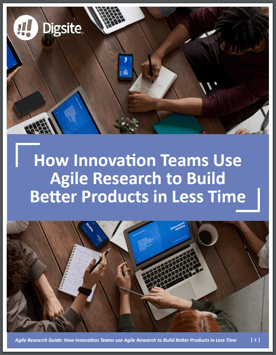Today’s leading organizations are increasingly employing agile approaches to developing new marketing programs, product or service innovations and customer experiences. By leveraging agile market research methods, your organization is able to simultaneously design, test and build new solutions before going to market. This approach speeds time to market, while still ensuring your go-to-market strategy fits with consumers’ lifestyles, situations and needs.
Our monthly blog post offers practical tips and advice on how to implement agile research. March's agile tips are centered around the ways in which you can maximize your research efforts and are provided by Monika Wingate, CEO and Co-Founder of Digsite.
Tip 1. Maximize Engagement with Text Messaging
Research has found that more and more customers—and members of the younger generations in particular—wish that companies would communicate with them via text message more often. Use an agile approach with text-based reminders to increase speed and engagement in your research. You’ll also want to be sure to use text messaging in conjunction with email to get better engagement.
Using embedded SMS capabilities, Digsite is able to invite participants to research studies, notify them of new activities and to ask them follow-up questions.
Tip 2. Iterate with Qualitative before Quantitative Validation
When you do validation research before qualitative exploration, it can lead to frustration and confusion among your team. If ideas don’t perform up to expectations, validation tests often don’t have diagnostics to tell you why and more importantly, what to do about it.
Save your team time and money by using qualitative iterations with 10-25 consumers to ensure your target consumer understands and value your solution for your bulls-eye occasion or use case, before validating your research with a broader sample.
Tip 3. Test the Riskiest Assumptions First
When doing research, it’s tempting for the team to collect all of the questions they have and try to put it into the research study. Instead, start with a smaller scope of a few questions that will have the biggest impact on your direction. Those answers often change the team’s direction and inform a new set of questions you hadn’t anticipated. This approach also tends to speed up development, as the smaller scope study can be completed more quickly and affordably.
The earlier in the process you resolve shortcomings, the faster you’ll be able to bring a well-received product to market. And, planning smaller scope in your initial test will give you the budget to iterate as you learn.
Tip 4. Ground the Research in Do Not Just Say
Don’t just talk about products. Making participants physically do something that helps them remember the context of how they would interact with your solution opens up parts of the memory that would otherwise stay dormant. Some people have a hard time talking about things in the abstract. Give research participants a physical task to do to spark their imagination and encourage more detailed feedback.
For example, Digsite offers behavioral testing on social media sites like Facebook and Instagram. Compare concepts, headlines, claims and more by seeing how many people click as well as how many provide their email for more info. Then bring them into a Digsite community to drill deeper into the why’s.
To learn more about how your organization can make the move to agile research, here are some resources to check out:
- Agile Research Guide: How Teams Can Innovate Faster
- How to Build an Effective Agile Research Team
- How Leading CPG Companies Use Online Qualitative Research for Better Business Outcomes
To see how four real-world companies are moving away from costly and time-consuming stage-gate development processes and prioritize innovation while operating with agility, check out our new eBook: How Innovation Teams Use Agile Research to Build Better Products in Less Time.





